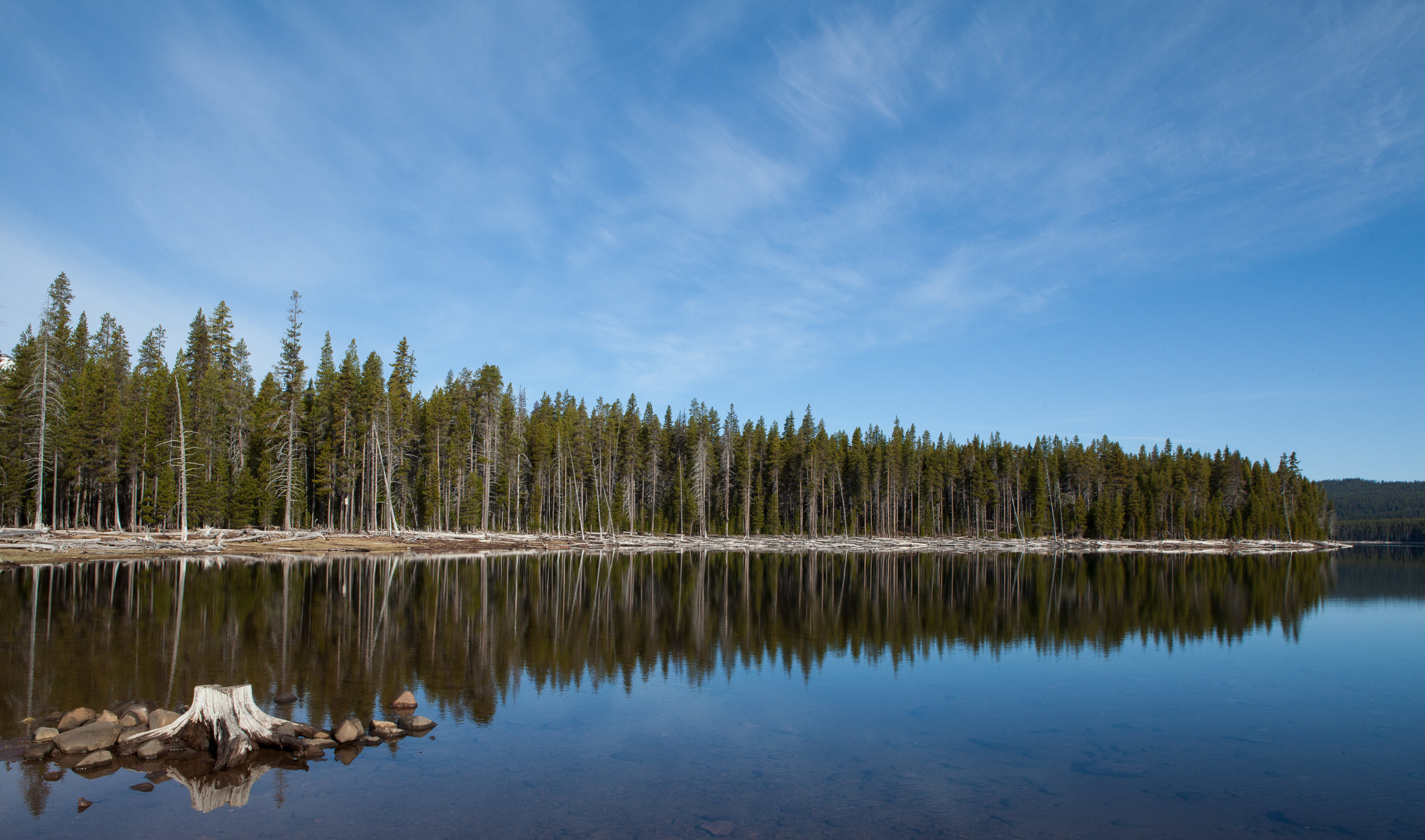In Defense of Nothing

Remember when we were kids and our parents would point to some neighborhood or strip mall and say, “I remember when that was nothing?” Then they’d nod in that nostalgic way. These days, I find myself saying things like that, not to my non-kids, but to whoever’s around. “Remember when that was nothing?” I often wonder about open land and its future.
To me, it’s a real question: will there be any wide open land – land with nothing – left for our kids to say that about?
Well, yes, there will be. We probably can’t develop the whole earth. But with a rising population and societal preference towards land development, we definitely will have to do something to prevent the places we love from becoming something. Open land may become our most endangered species.
Land Philosophies
When I was living on the road for two years, I distinctly remember driving into Taos, New Mexico, a beautiful town where the desert sand meets the mountain green. Surrounding the town center is suburban sprawl. The buildings are adobe-style, so Taos’ sprawl is prettier than most places, but sprawl is still sprawl.
There’s one huge chunk of land that’s wide open and pristine. It’s fenced in and the perimeter signs read “Taos Pueblo Ranch – No Trespassing.” The Taos Pueblo has done a radical thing with their land, all 99,000 acres of it. They’ve done nothing. For over 1,000 years, they’ve simply let it be. And they can still gather and drink the water directly from their river – the only non-treated water source in the area.
Land has always signified opportunity, and opportunity is money, and money is power. It’s an incredibly hard cycle to break – to get people to do nothing with the land. But the people of the Taos Pueblo seem to view their land opportunity as nourishment for their community, rather than nourishment for few folks’ bank accounts.
But It’s Impossible
You know what’s been impossible for me lately? To not think about land conservation. The highest levels of our government have forced the issue to sit down at our dinner tables. All national monuments greater than 100,000 acres are currently under review for reduction or elimination.
Yet very few of us (myself included) have done anything substantial to protect a piece of land we love. Why is that? Are we lazy or apathetic? Probably a bit, but that’s not why. Is it because we feel land development is inevitable? Probably, but still not a good excuse. I think it’s because land protection is daunting, highly-political, and the process is made intentionally opaque. We assume that land decisions are made by a few people behind closed doors. Conservation feels impossible. And that’s what they want us to think, while they fire up the dozers that affect everyone, forever.
It’s time to take our dinner table grumbling and do something with it. The four ideas below should help you take a first step in saving a piece of nothing. No matter your age – but especially if you’re between 20-40 – you’re probably looking for a cause or way to volunteer your time. Land conservation is one of the worthiest causes of our lifetimes.
4 Easy Steps to Defend the Land of Nothing
1. Listen to the Dirtbag Diaries podcasts titled, “Endangered Spaces – Katahdin Woods and Waters” and “Endangered Spaces – Bears Ears.” These two podcasts give some great background into two national land battles.
2. Read Tools for Grassroots Activists by Patagonia Books.
This is a guidebook for how to approach and win land conservation battles. It’s filled with witty commentary and characters, sage advice, and the nuts-and-bolts of land conservation victories. I pretty much underlined the whole book.
PAUSE. Steps one and two were designed to fire you up to take steps 3 and 4. If you don’t feel sufficiently inspired yet, please walk, bike, or drive to one of your favorite places, and then imagine it becoming a neighborhood or shopping center, or having it stripped of its park status. Then move on to step 3.
3. Research and support a local land conservation organization AND a national conservation organization
Field Notes:
- Google “land trust [your state]” and start reading about which organization(s) you may align with.
- Some national organizations to think about: The Sierra Club, Nature Conservancy, Trust for Public Land, Wilderness Society, The Conservation Fund, Land Trust Alliance.
- Donate money (even small amounts) on a monthly basis to the organizations you most support.
- Look at the organization's calendar of activities are and start contributing/attending.
- If no organization seems to represents your interests, consider starting your own, with a goal of protecting something small and accomplishable.
4. Pick a piece of land locally – as well as nationally – and do something
Field Notes:
- This is where the rubber really meets the road. I highly encourage you to schedule time into your day (small chunks) to dedicate to these projects. It could be as simple as utilizing your Tuesday work breaks, rather than checking Instagram.
- Talk with your local and national organizations and see what land projects they need help with, and how your professional skills may overlap with their needs.
- Start attending (or reading the minutes) of your town, county, or city council meetings, paying special attention to the land use committee. This will educate you about future development projects.
- On a national level, there are plenty of public lands to support. Call, write, email and petition your representatives. Yes, these strategies are still very effective.
I hope you’ve found something helpful in here. If you can’t take a small step today, come back to this when you’re ready. The Land of Nothing is a silent gift to us all that needs the voice of many.
“In boxing when you throw a punch, you become susceptible to the counterpunch, and some boxers never get past that fear of committing. Of getting hit, of failing. They can’t let their hands go. So they seldom win, regardless of their talent, power, or speed. Taking risks is important. You can’t win if you are too afraid of losing. Every single person on this rock is now facing the same challenges and the need to keep hope alive. Everyone has a river, or canyon, or beach that needs protecting. So let those hands go, have some fun with it, and know you’re gonna hit some solid meat from time to time. And don’t let the bastards get you down.”
– Excerpt from Tools for Grassroots Activists




